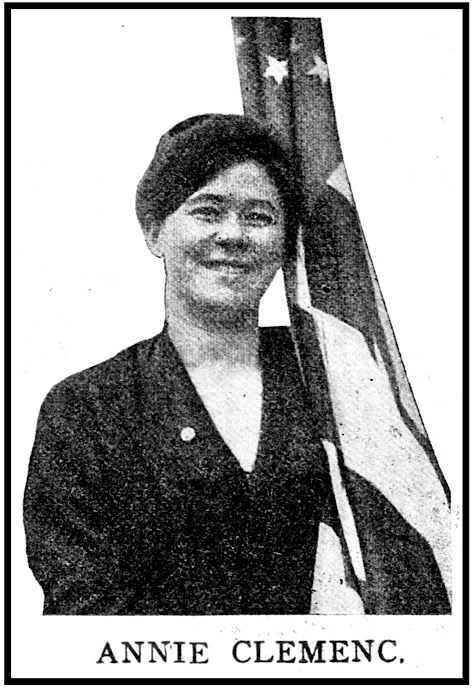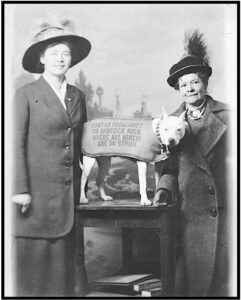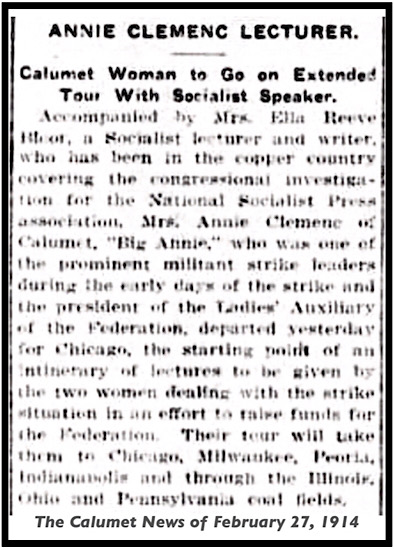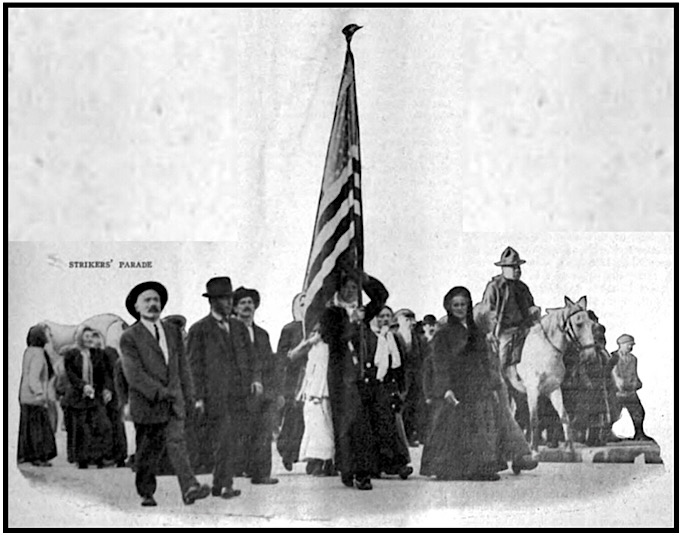Up above the strikers stood Annie Clemenc,
girl leader of the miners.
She was not the usual militant Annie Clemenc.
She was saying a prayer for the children.
The Day Book, January 6, 1914
Annie Takes Up Her Flag

On July 23, 1913, 9,000 copper miners of the Keweenaw Peninsula, Upper Michigan, laid down their tools and walked off the job. They were led by the great Western Federation of Miners, and they had voted by a good majority for a strike: 9,000 out of 13,000. The main issues were hours (the miners wanted an eight hour day), wages, and safety. The miners hated the new one-man drill which they called the “widow-maker.” They claimed this drill made an already dangerous job more dangerous.
The mining companies had steadfastly refused to recognize the Western Federation of Miners in any way. They would continue to refuse all efforts at negotiation or arbitration, even those plans for arbitration which did not include the union, and this despite the best efforts of Governor Ferris, and the U. S. Department of Labor. James MacNaughton, general manger of Calumet and Hecla Mining Company, famously stated that grass would grow in the streets and that he would teach the miners to eat potato parings before he would negotiate with the striking miners.
The Keweenaw Peninsula was a cold, windy place, jutting out into Lake Superior from the Upper Peninsula of Michigan. This area was known as the Copper Country of Michigan and included Calumet Township of Houghton County, with the twin towns of Hancock and Houghton ten miles to the south. Calumet Township included the villages of Red Jacket and Laurium.
It was here in Red Jacket, on the third day of the strike that Annie Clemenc, miner’s daughter and miner’s wife took up a massive America flag and led an early morning parade of 400 striking miners and their families. Annie Clemenc was six feet tall, and some claimed she was taller than that by two inches. The flag she carried was so massive that it required a staff two inches thick and ten feet tall. The miners and their supporters marched out of the Italian Hall and through the streets of the Red Jacket to the Blue Jacket and Yellow Jacket mines. They marched silently, without a band, lined up three and four abreast. These early morning marches, with Annie and her flag in the lead, were to become a feature of the strike.
 —————
—————



